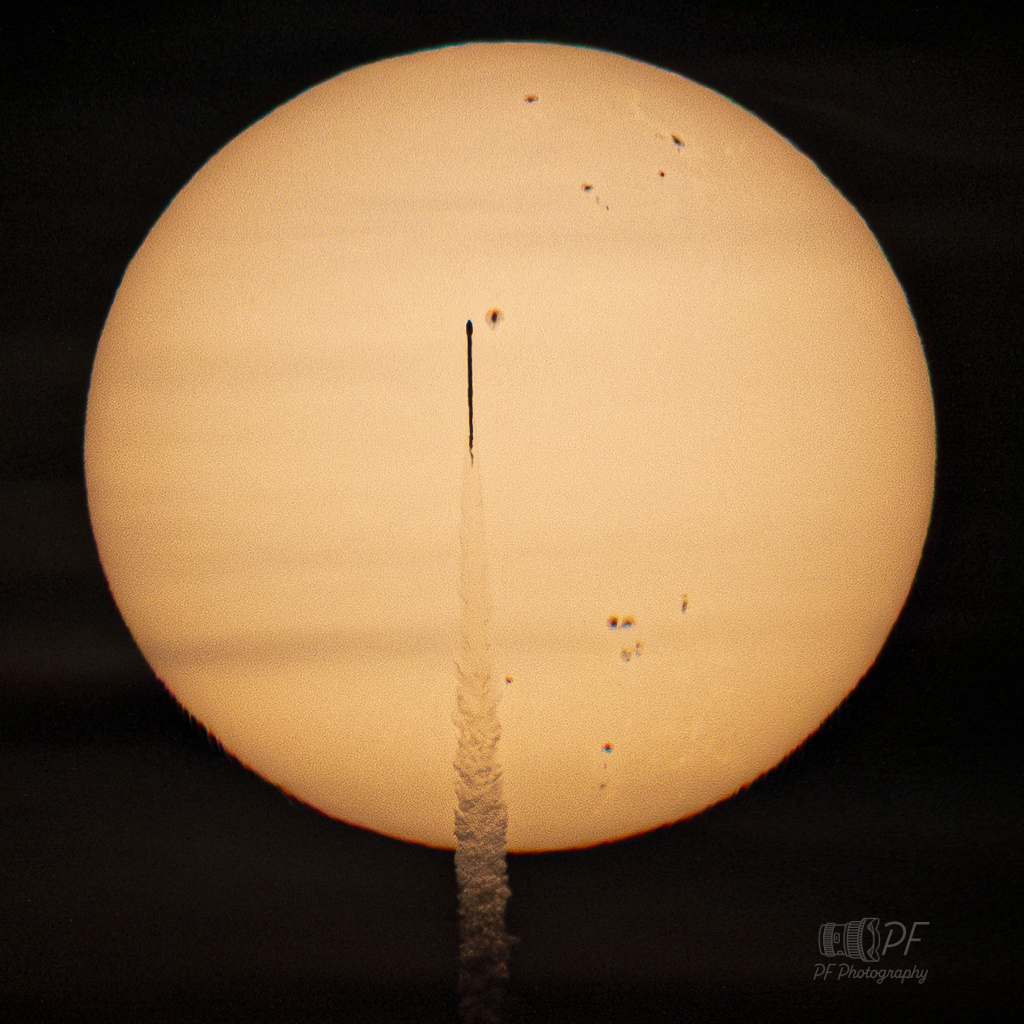Copyright:Pascal Fouquet
中文翻譯:
在9月24日的早晨,從佛羅里達的奧蘭多拍攝的一幅遠距望遠鏡照片中,一枚火箭穿越了明亮的太陽圓盤。這裡距離它的肯尼迪太空中心發射場約50英里。這枚火箭將三個新的太空天氣任務帶到了太空。目前,NASA的Interstellar Mapping and Acceleration Probe、NASA的Carruthers Geocorona Observatory,以及國家海洋和大氣管理局(NOAA)的太空天氣後續任務Lagrange 1(SWFO-L1)的信號已成功接收,它們開始朝向L1,一個地球與太陽之間的拉普拉斯點出發。L1點在地球的太陽方向大約有150萬公里的距離。有趣的是,太陽上的黑暗太陽黑子大帥哥正在與這枚飛過的火箭一起出現。事實上,巨大的活躍區域AR4225就在火箭的鼻尖旁邊。
原文:
On the morning of September 24 a rocket crosses the bright solar disk in this long range telescopic snapshot captured from Orlando, Florida. That’s about 50 miles north of its Kennedy Space Center launch site. This rocket carried three new space weather missions to space. Signals have now been successfully acquired from all three – NASA’s Interstellar Mapping and Acceleration Probe, NASA’s Carruthers Geocorona Observatory, and the National Oceanic and Atmospheric Administration (NOAA) Space Weather Follow-On Lagrange 1 (SWFO-L1) – as they begin their journey to L1, an Earth-Sun lagrange point. L1 is about 1.5 million kilometers in the sunward direction from planet Earth. Appropriately, major space weather influencers, aka dark sunspots in active regions across the Sun, are posing with the transiting rocket. In fact, large active region AR4225 is just right of the rocket’s nose.
來源:NASA每日圖片



